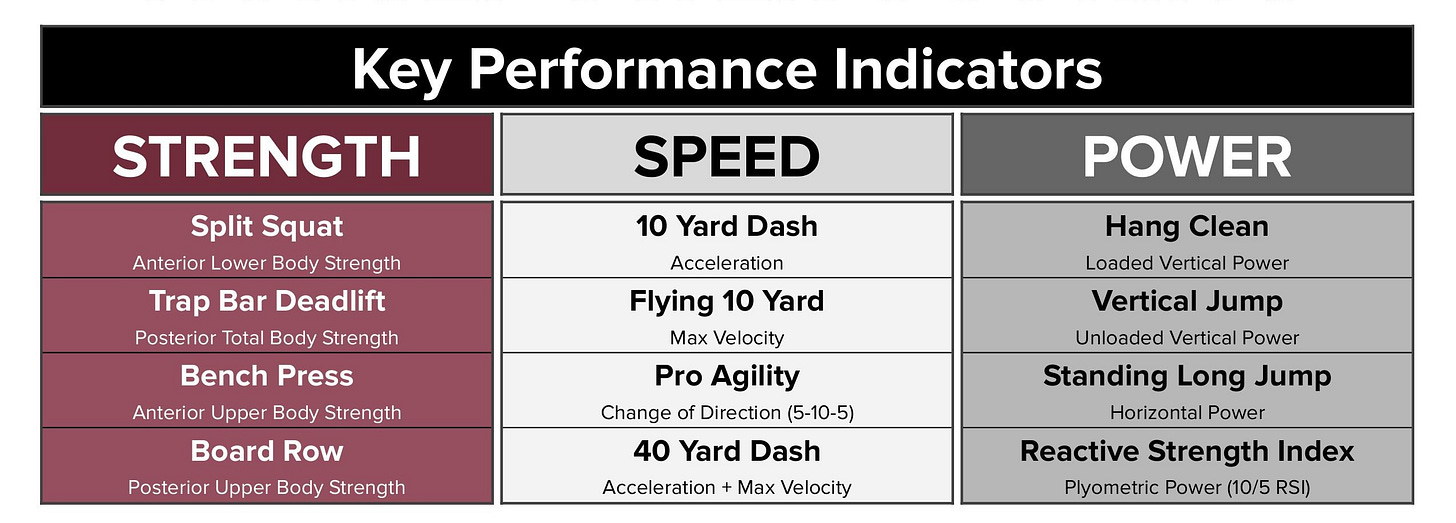Tracking What Matters: Key Performance Indicators in Strength & Speed
#8 - Strength & Speed Coaching – Pursuing Your Best ⚡️
Hey everyone, Preston here—welcome back to Pursuit PE.
Over the past few newsletters, we’ve covered how to deliver workouts efficiently and track progress effectively without overcomplicating things. Today, we’re closing out our Workout Delivery & Progress Tracking series by focusing on what truly matters in terms of athletic performance progress.
Tracking What Actually Matters
If you’ve been following along, we’ve covered:
Training Cards – A simple, tangible way to track daily work.
Motivation & Consistency – Strategies to keep students engaged long-term.
Blending Pen & Paper with Digital – How to integrate simple tracking tools for a bigger-picture view.
Now, let’s talk about which data points actually help you measure meaningful progress in your students—without drowning in numbers.
Why Key Performance Indicators (KPIs) Matter
KPIs bring clarity to your program. Instead of tracking everything possible, you focus on a few high-impact metrics that tell the story of athletic development.
They provide a baseline – Establishes where students start and what their goals should be.
They show progress over time – Strength and speed don’t improve overnight, but KPIs help reveal steady gains.
They allow for better coaching decisions – If vertical jump numbers aren’t improving, it may indicate a need for more power-focused training.
By keeping things simple and focused, you’ll gain the insights you need without unnecessary data overload.
The 4 KPIs We Track in Strength & Speed
Not everything is worth tracking. These are 4 essential KPIs that indicate whether an athlete is actually improving.
1. Attendance & Engagement
Why It Matters: The best program in the world is useless if students don’t consistently show up.
What We Track:
Attendance rates
Engagement (PR tracking, goal setting, filling out their training card, involvement in the program)
How to Use It: If attendance drops, revisit motivation tactics and consider adjusting session structure. The key is to take ownership as a coach. Make each session the best part of the student’s day.
2. Relative Strength (Strength-to-Bodyweight Ratio)
Why It Matters: Strength is important, but being strong for your size is what translates to real athletic performance. Think lift-to-bodyweight ratio (e.g., 1.5x bodyweight).
What We Track:
Split Squat
Trap Bar Deadlift
Bench Press
Board Row
How to Use It: If an athlete’s strength increases but their speed drops, they may have gained too much body weight relative to strength.
Not a paid subscriber yet? Upgrade here to unlock the full breakdown and exclusive resources!
Keep reading with a 7-day free trial
Subscribe to Pursuit PE to keep reading this post and get 7 days of free access to the full post archives.




